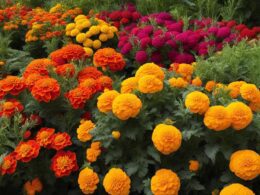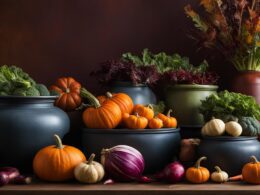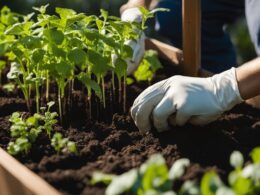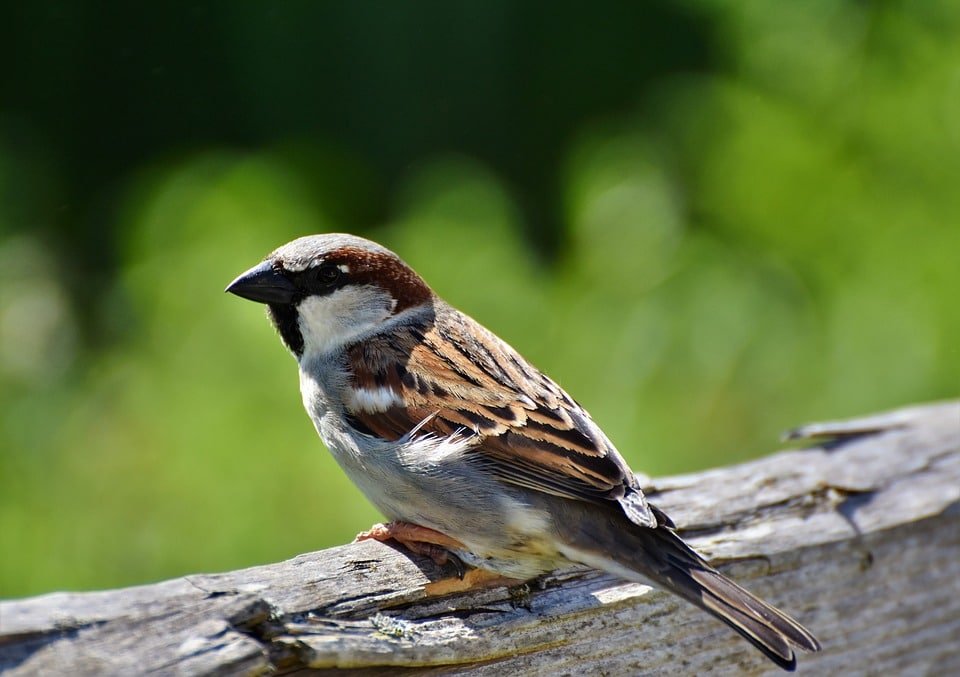Are you tired of struggling to grow a successful herb garden? Do you find yourself frustrated with plants that don’t seem to thrive or produce a bountiful harvest? If so, it’s time to consider the benefits of pairing herbs together for better growth and yield.
In this guide, we’ll explore the concept of ‘herb harmony’ and how understanding which herbs grow well together based on their specific needs can lead to a thriving and abundant garden.
Growing a successful herb garden can seem daunting, especially if you’re new to gardening. But by considering the basics of herb growing, such as understanding growing types and grouping herbs with similar needs, you can simplify the planning process and achieve a harmonious garden.
In this article, we’ll discuss various herb groupings, from those that grow well with every other herb to those that prefer specific soil and lighting conditions. We’ll also cover the benefits of pairing herbs together and common mistakes to avoid. With these tips and insights, you’ll be on your way to a thriving herb garden in no time.
Quick Takeaways
- Knowing which herbs grow well together based on their water, sunlight, soil, and nutrient needs is important for a successful herb garden.
- Planting herbs together in groups can provide benefits such as better growth and repelling pests.
- It’s important to avoid planting herbs that don’t grow well together, such as mint and any other herb, or basil and sage.
- Understanding herb groupings based on growing types and grouping herbs with similar needs can simplify herb garden planning and care.
Groupings and Pairings
Now that you understand the importance of knowing which herbs grow well together, let’s dive into specific groupings and pairings for a successful garden.
One of the key growing techniques is companion planting, which involves planting herbs that complement each other’s growth and repel pests. Chives, for example, grow well with every other herb and act as natural pest repellents while attracting pollinators.
Another great pairing includes rosemary, thyme, and sage, which all share a love for sunlight and drier soil and are perennials. Marjoram, oregano, thyme, and lavender also fair well together as a group or in pairs, while cilantro, basil, parsley, and chervil thrive on moist soil and all-day sun.
By grouping herbs with similar needs, you’ll simplify your garden’s care and ensure that each herb can grow to its fullest potential.
What Are Some Compatible Plants for Upside-Down Gardening?
Some beginner’s upside-down gardening tips involve choosing compatible plants. For this unique gardening technique, popular options include tomatoes, peppers, cucumbers, strawberries, and herbs. Upside-down gardens require plants with sturdy stems and compact roots. By selecting appropriate plants, beginners can enjoy a thriving and visually stunning upside-down garden.
Growing Basics
To ensure your herbs thrive, it’s important to understand their growing types and group those with similar needs together in the same planter or plot of land. Annual herbs grow and die in a year, biennials grow for two years, and perennials can live for three or more years.
Grouping herbs with similar needs in the same planter or plot of land makes it easier to care for them. This way, you can water them at the same time and ensure they receive the same amount of sunlight. Soil preparation is also important for herb growth. Herbs prefer nutrient-rich soil that drains well.
So, before planting, loosen the soil and add organic matter like compost or manure to improve soil structure and increase fertility. Watering techniques are also crucial for herb growth. Water your herbs when the top inch of soil is dry, but don’t over-water them as it can cause root rot.
Herbs like basil and parsley prefer moist soil, while thyme and sage prefer drier soil. Make sure to water each group of herbs accordingly. Spacing is also important as it allows for proper air circulation and prevents the herbs from competing for nutrients.
By following these simple growing basics, you can ensure your herbs will thrive and provide flavorful additions to your meals.
Benefits and Mistakes to Avoid
If you want to ensure a fruitful and stress-free gardening experience, it’s important to understand the benefits of planting herbs together and avoid common mistakes.
When you plant herbs that grow well together, you can maximize your space while also improving soil quality. By grouping herbs with similar needs, you can create a microclimate that supports healthy growth for all plants.
In addition, planting herbs together can help you avoid rookie gardening mistakes. For example, planting annuals and perennials together can cause damage to the roots of perennials when digging out spent annuals. By understanding the needs of each plant and grouping them accordingly, you can save time, money, and frustration in your gardening endeavors.
So, take the time to plan your garden and choose herb pairings that will thrive together, and you’ll be rewarded with a bountiful harvest.
Frequently Asked Questions
Are there any herbs that should be avoided altogether because they don’t grow well with any other herbs?
Companion planting is important for herb growth, but herb incompatibility should also be considered. Mint and any herb, dill and lavender, basil and sage, and cilantro and fennel should be avoided altogether.
Can herbs be planted alongside other types of plants, such as vegetables or flowers?
Yes, companion planting with herbs can benefit other plants in your garden. Benefits of co-cultivation include pest control, improved soil health, and increased yields. Experiment with herb and vegetable pairings to find what works best for your garden.
How often should herbs be fertilized, and with what type of fertilizer?
Want healthy herbs? Fertilize them every 4-6 weeks with a balanced organic fertilizer. Choose one with a nitrogen-phosphorous-potassium ratio of 5-10-10 or 10-10-10 for best growth. Happy herb gardening!
What are some common pests and diseases that affect herb plants, and how can they be prevented or treated?
To prevent common pests and diseases that affect herb plants, use preventive measures like removing dead leaves and maintaining good air circulation. Natural remedies like neem oil and garlic sprays can also be effective in keeping pests at bay.
Can herbs be grown indoors, and if so, what are some important factors to consider when setting up an indoor herb garden?
To successfully grow herbs indoors, consider factors like lighting, watering, and choosing herbs that thrive in indoor environments. Use containers with drainage holes and provide proper ventilation. Keep plants healthy with regular pruning and fertilizing.









